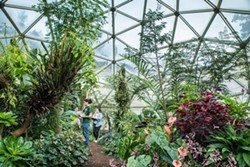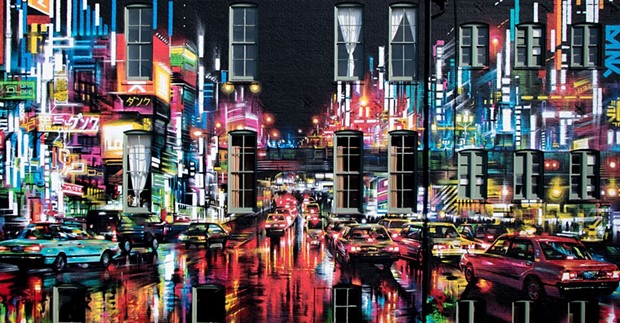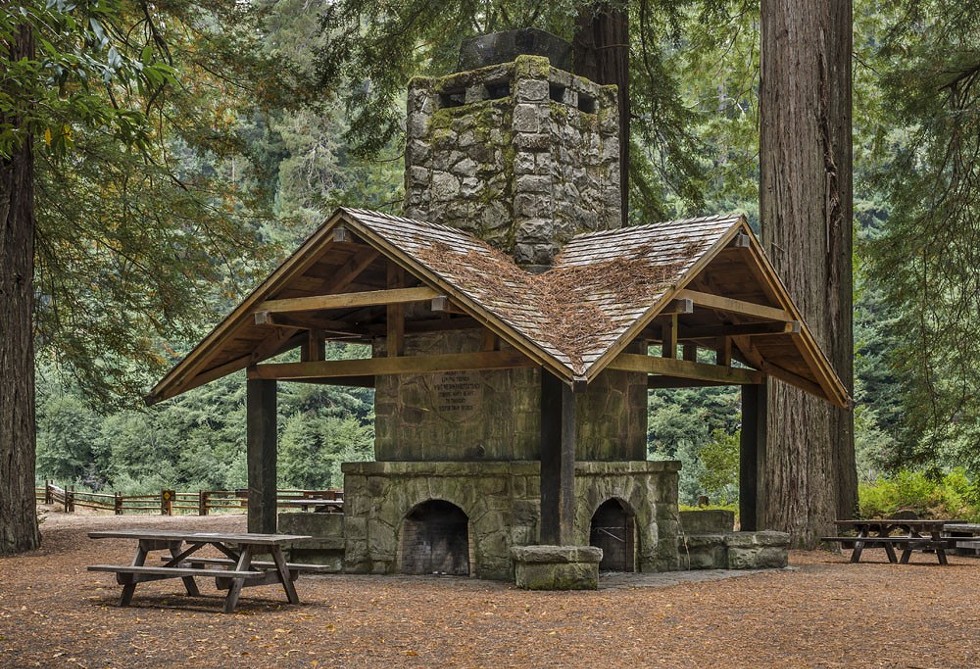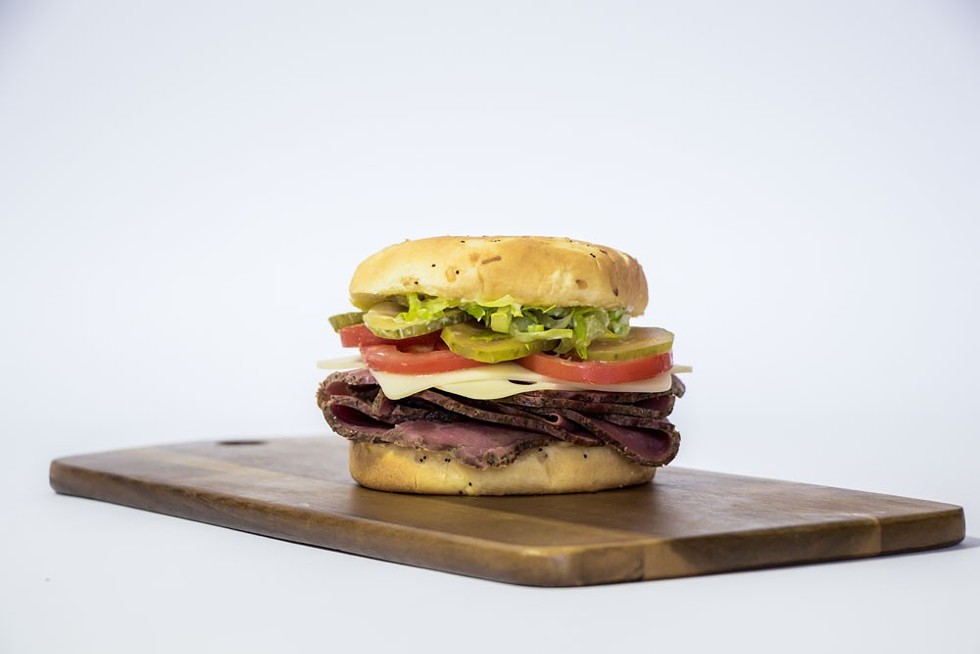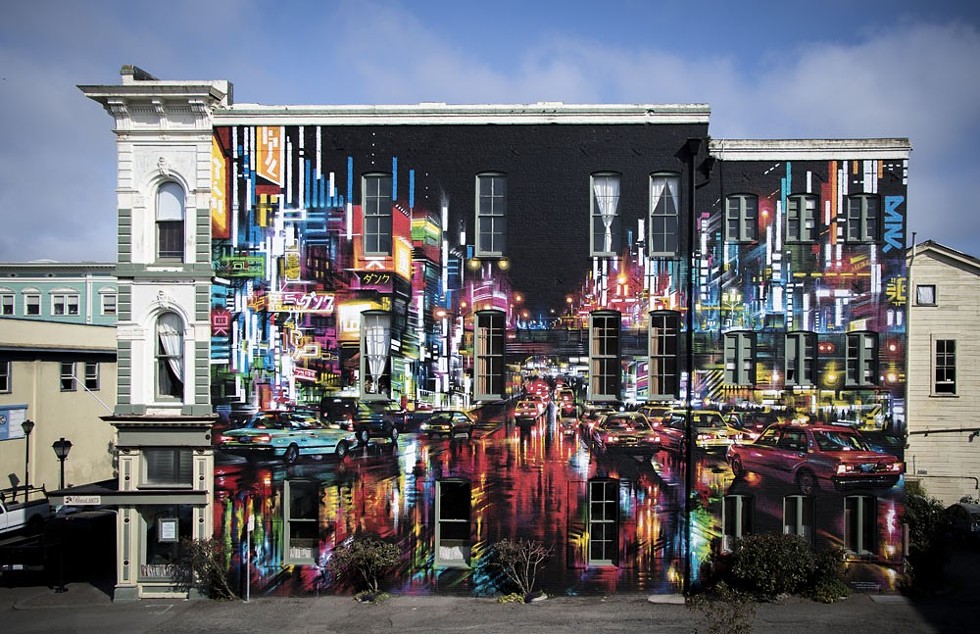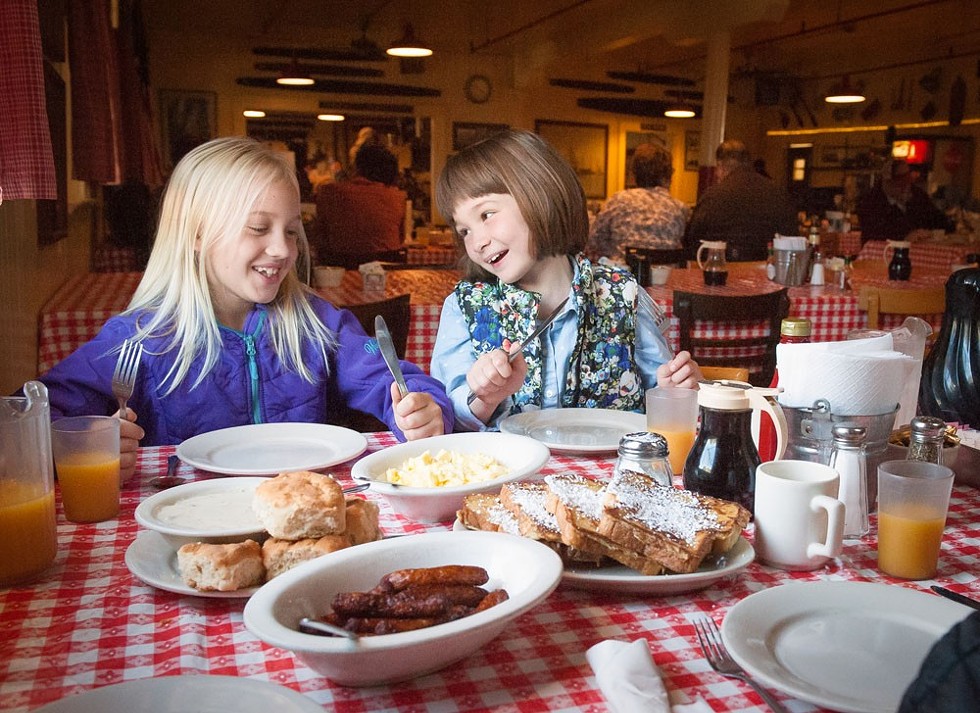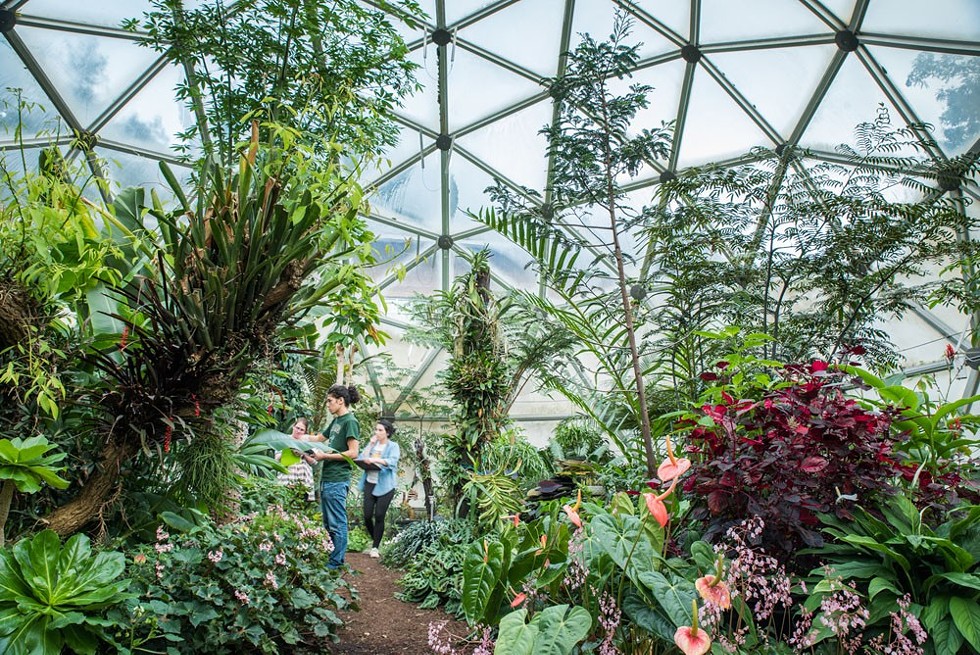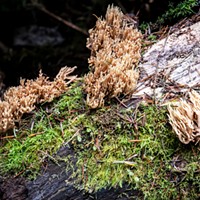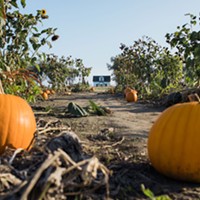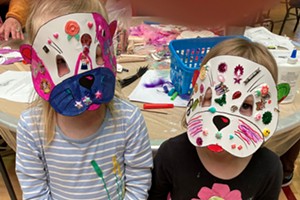Drew Hyland, Greg Nyquist, Jillian Butolph and Mark McKenna
Winter is coming ... but activities still abound. Get fired up in front of old outdoor hearths surrounded by ducks and redwoods. Fuel up where young royals dine and old whalers pick perfect crab. Or feast your eyes on Yurok art and color saturated murals.
Afterward, two trip trifectas await. On the Humboldt State University campus, walk among banana trees in a giant geodesic greenhouse, a herd of African buffalo in a study hall and a riot of Gaudi-esque shapes in the art building. And in the town of Samoa, handcrank an old ship foghorn, peep inside century-old luxury train cars and fill up lumberjack style in a 125-year-old cookhouse.
Outdoorsy Type
As the weather cools, you may prefer to cozy up in front of a fireplace rather than enjoy the great outdoors. Here in Humboldt, you can do both. For starters, one can light up the logs in a pretty old growth redwood forest along the Avenue of the Giants, the California Women's Federation Grove.
The so-called Federation Hearthstone (Avenue of the Giants, 3 miles north of the Humboldt Redwoods State Park Visitor Center), designed by famed Hearst Castle architect Julia Morgan, is an impressive work fusing four open fireplaces, each facing a different direction, with a central vent, cobbled together with big stones from the nearby Eel River. The structure is framed with thick redwood trunks and topped with a roof that provides shelter from the elements.
The circa-1932 monument commemorates the purchase of the grove by women's clubs throughout California, whose 45,000 members each donated a dollar to save it from the saws. Above the mantle of each hearth is a medallion inscribed with witty poetic words.
The grove, which sits on the banks of the Eel River, is popular for picnics. Two solid redwood tables are each long enough to accommodate a family reunion.
In Eureka, buried in the depths of Sequoia Park on V Street (3 miles southeast of Old Town Eureka, next to the Sequoia Park Zoo at 3414 W St.), the last stand of old growth redwoods in the historic seaport, sits a curious stone floor with a giant hearth, a vestige of the Victorian era. The oddity, just east of the duck pond, is all that remains of a log cabin that delighted children for decades.
In 1953, a plaque was placed on the hearth in memory of Rose Ivancich Walsh, who "liked a warm glowing fire." You might be tempted to start one yourself. Can you? Hard to say. It's not an official barbecue spot like others in the park, but charred ash and cinders suggest recent use. And there are rumors a witch cooks her boiling brews in a pot hanging from the hearth hook. You might have to deal with her.
To reach the hearth from the parking lot, follow the paved path or most any of the unpaved trails and wander downhill. Listen for children or ducks in the forest and soon you will be there.
The third fireplace, an hour north in the Prairie Creek Redwoods State Park Visitor Center (127011 Newton B. Drury Parkway, Orick, (707) 488-2039), while not technically outside, remains a worthy nexus of fire, stone and outdoor adventure.
The rustic building, built by the Civilian Conservation Corp as a residence for the park warden in 1933, houses numerous items of interest: fragments of whales from the beach, a redwood stump with a Roosevelt elk skull and antlers buried inside, and a massive stone fireplace, where, come the cooler months, one might find center staff burning a few odd branches here and there.
To maximize the warm-up sensation, stroll first along the Revelation Trail, which starts just outside the back door, an easy mile-long loop that nonetheless features some of the most impressive trees in Redwood National and State Parks, a super tree park composed of one federal and three adjoining state parks. Or see the giants in a new and dimmer light during the annual Candlelight Walk in the Redwoods on Saturday, Dec. 2, which begins at the Prairie Creek Visitor Center and concludes with a welcome warm-up by the fireplace.
Foodies
In southern Humboldt, one may dine or drink at the same haunts as Clark Gable, Herbert Hoover, Cher and the King of Jordan: the restaurant and bar at the Benbow Historic Inn (445 Lake Benbow Drive, Garberville, (800) 355-3301), one of the grand dames of the Redwood Highway when both were completed in the 1920s.
Despite its many Wine Spectator and AAA Four-Diamond awards, the English Tudor-style landmark remains laid back and warmly welcomes guests of all stripes and stations, whether overnighting in the inn, which is on the national register of historic places, or enjoying the weekday happy hour.
One reliable lounge companion, Benbow's permanent guest, a giant stuffed bear named Benson, will be sure to join you in a toast in the brand new bar crafted by famed custom bar builders Wallace & Hinz, a Humboldt business whose works appear in classy joints from Middle America to the Middle East.
Stay for dinner, put on some casual resort dress and enjoy the culinary creations of staff recruited from around the world. The grilled filet mignon is justifiably popular. So is the wine list with 450 selections. Like the bar, the restaurant and kitchen have undergone complete makeovers without losing their historic ambiance.
The Ferndale Meat Co. (376 Main St., Ferndale, (707) 786-4501) has put the mmmm in meats for more than 110 years. The butcher shop has kept the same family customers for generations, ranchers who bring their Humboldt grassfed cattle to the Main Street storefront for processing.
For the rest of us, local or no, the institution serves as Humboldt's most popular deli, serving up inexpensive sandwiches with heaping portions of California's freshest, healthiest carnivore food. Grab a few before a Lost Coast hike or dine in at a handle of tiny tables and admire all the 4-H pictures and certificates.
Food network host Guy Fieri worked here as a kid, loading beef jerky into the smoker outside. The current star of the place is owner Curt Terribilini's Northern Italian sausage, made with equal parts beef and pork from a secret family recipe. When in town, Guy chows it down with mashed potatoes and apple sauce.
Come late autumn, two seasonal migrations begin in Humboldt: Dungeness crabs make their way toward fishermen's pots, and those hungry for said crab find their way to Gill's By the Bay (77 Halibut Ave, King Salmon, (707) 442-2554). Since the 1940s, this low-key diner, a few miles south of Eureka off U.S. Highway 101, has served up dependable comfort food for breakfast and lunch like country eggs benedict, fried oysters, clam chowder and grilled sole. But the pincers de résistance? Fresh crab omelets and sandwiches, perfectly picked with just the right blend of seasoning, mayo and cheese. As you work off the Dungeness delights, have a look at the old pictures on the walls of a handsome young whaler, Ben Gill himself, who just might be behind the counter pouring your coffee. Or stroll outside among the flowers, strawberries and birds on the patio and fisherman's boardwalk, which overlook a pretty expanse of Humboldt Bay.
Art Lovers
In the middle of Redwood National Park on U.S. Highway 101, the Yurok Country Visitor Center (101 Klamath Blvd., Klamath, (707) 482-1555) features traditional and contemporary works by local tribal artists, many for sale, like wood-block carvings, feather arrangements, necklaces and earrings made from natural objects like abalone and dentalia shells, and miniature baby baskets and rattles.
One new exhibit in particular has the staff abuzz — an apron used for dances that dates back to the 1700s. Composed of sea shells, leather and woven bear grass, the ceremonial relic travelled from Germany to the Smithsonian Institute over the centuries before returning to its rightful place in the Yurok nation, which runs along both sides of the Klamath River, the mightiest wild and scenic waterway in California.
The visitor center, built to resemble a traditional Yurok dwelling, is itself a stunning piece of work, whether the exterior, with its graceful curved lines, sloping roofs and circular openings; or the interior, with its aesthetically awesome interactive displays, some of which decode the characters and symbols used in Yurok art and artifacts.
Eureka, anointed some years ago No. 1 in John Villani's Best Art Towns in America, is not lazing about on its laurels. The historic seaport is coated in new civic art this year, particularly two giant twin murals in Old Town, which together make quite a splash.
The first recreates a busy urban Tokyo scene on a three-story Victorian storefront, the Art Center. Seems pretty random but there's a method to the madness of creator Dan Kitchener, a noted London muralist whose outdoor works adorn three continents. He intends to make a reciprocal work in Japan's capital city, featuring the California redwoods.
The second, dashed on by another popular UK artist, Duncan Jago, turned a wall of the St. Vincent de Paul Building into an abstract riot of colors. (Both are on G Street between Second and Third streets, facing south to Opera Alley.)
Love or hate, share your impression with the nearby Black Faun Gallery (212 G St., Eureka, (707) 267-4297), which bankrolled both.
Dozens more murals populate Old Town, many by famed Kinetic Race and Burning Man artist Duane Flatmo, including his classic Dancing Girl on the west wall of the Arkeley Center for the Performing Arts (on F Street between Fourth and Fifth streets), the tallest mural in California north of San Francisco.
To exercise your eyes indoors, Humboldt State University's Third Street Gallery (416 Third St., Eureka, (707) 443-6363), shows the works of promising local students and faculty, acclaimed Californians and established internationals. The first room tends to be more risky, the second more accessible.
With the Kids
Parents go to the circa-1890 Samoa Cookhouse (908 Vance Ave., Samoa, (707) 442-1659), the last lumber mill eatery in the West, for a variety of reasons: the heaping portions of comfort food, family tradition, family-style service and to see curious colorized photos from the golden age of redwood heritage, with armies of mustachioed men standing atop stumps the size of Rhode Island.
But kids go there for one: fun. After chowing on French toast and biscuits and gravy, they run en masse into the cookhouse museum room. They stare at giant logging saws and blades, vintage dioramas, industrial-sized cooking equipment from a century ago and old typewriters and accounting machines whose keypads, for better or worse, they cannot resist plunking repeatedly with glee.
In the parking lot of the cookhouse, the Humboldt Bay Maritime Museum (77 Cookhouse Road, Samoa, (707) 444-9440, Thursday-Saturday from Dec. 1-Mar. 15, Tuesday-Saturday from Mar. 16-Nov. 30) offers more adventures for burgeoning cabin boys and girls. They gravitate to the miniature models of tall ships, a real lighthouse lens, the most beautiful handcrafted redwood canoe ever made and, naturally, the handful of early 20th-century boat artifacts they can put their mitts all over, such as a hand-cranked fog horn that sets things astir in the small red cabin museum.
It won't rattle the kindly volunteer manager, Winferd Grissom, who's a tad hard of hearing. Back in the day, he was no stranger to making noise, having sold newspapers on the streets of Eureka for decades, calling out in his distinctive voice, "Paaaaaper! Paper!" He makes sure the kids see the toy compasses, which sell for a pittance.
After a cookhouse meal or a maritime museum visit, take a peek down the hill at the Samoa Roundhouse and Shops (Intersection of Cookhouse Road and Vance Ave., (707) 443-3957 or (707) 269-0286), which a century ago was the largest redwood lumber mill anywhere. The sprawling yard houses hulking steam donkeys and other iron giants resembling dinosaurs, massive timber locomotives and historic train cars.
On many weekends, the volunteers of the Timber Heritage Association, mostly old men who are boys at heart, tinker in the shops, firing up old diesel engines or testing steam whistles. Introduce yourself and your kids and you'll likely soon embark on a warmhearted tour through the timber heritage of Humboldt, where the modern lumber industry began.
The little ones favor the old caboose, where they can shimmy up to elevated seats for a panoramic view of Humboldt Bay, and the circa-1920s passenger cars. Most of the 70-foot-longers need tender loving restoration, but the luxury dining and parlor cars are in fine shape and children cannot resist a brief sit at one of the antique dining tables to sample the imitation food.
Not Strictly for Tourists
On the campus of Humboldt State University, hidden behind the Bio Sciences building, the Dennis K. Walker Greenhouse (near the corner of 17th and B streets, Arcata, (707) 826-3678) offers a warm refuge during the cool seasons. The 12,000-square-foot, sprawling complex nurtures more than 1,000 botanical species.
The desert, fern and aquatic rooms shelter many exotic and rare plants that amaze the eye and nose, with whirling petals, hanging roots and carnivorous pitchers. But the main event is the subtropical dome, a geodesic-encased steamy Eden with banana trees, coffee bushes and more surprises to fauna over.
While rarely seen, the greenhouse is renowned (Harvard poached its staff to run theirs), free and open to the public. You can walk-in but best to call ahead to make sure the staff can lead you around. Beware: Some plants have lethal toxins. Others you can imperil with a touch. And kids left unattended or underage (must be 7 and up) are fed to the giant Venus fly trap.
Ever have the feeling you're being watched? Wander through one neighboring building and you will be — by thousands of eyes from around the world. The Wildlife and Fisheries Department (in the B Street alley between Laurel and 17th streets) houses a wildlife collection with 15,000 mounted, stuffed and catalogued bird and mammal specimens from about 50 countries, including 1,000 on display in the hallways. Strange birds with wing feathers longer than tails, a smiling Grizzly and snarling wolf, drawers and drawers of tiny eggs, arranged like stars in clear miniature boxes. It's not a morgue, but a library in which students and researchers "check out" items from one of California's best collections of things old, biological and beautiful.
Three notable stops on the second floor, the Stanley Harris Study Hall, where students cram under the watchful eyes of kiwis, emus, cormorants and eagles; the Head Room, a classroom ringed by exotic trophy game heads; and, Wednesday and Thursday from 9 to 11 a.m. or by appointment (707-826-4034), the main Wildlife Museum, tended by kindly curator Tamar Danufsky. To supersize your trip, stop outside the entrance to nearby Science Building C to see a sperm whale cranium the length of an RV.
After this flora and fauna fest, head a block north on Laurel Street, go up the steps, to cleanse your mental palette with human creations in the Art Department. First stop in Building A, the Reese Bullen Gallery (707-826-3629), which rotates HSU's permanent, faculty and student works. Next up is Davood's Garden, created by David White, a hallway connecting Art Buildings A and B, transformed into a kaleidoscope of colors, sculptures, shapes and textures — a whimsical collision between Barcelonan architect Antoni Gaudi and Eurekan folk artist Roman Gabriel.
With rare exceptions, these campus jaunts are limited to weekdays. However, one may call ahead to make special arrangements.
Speaking of...
-
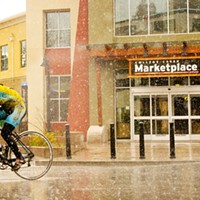
Perfect Winter Trips
Jan 16, 2019 -

Perfect Fall Trips
Oct 1, 2018 -
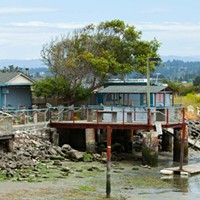
Kayaks & Crab
Jul 25, 2018 - More »

